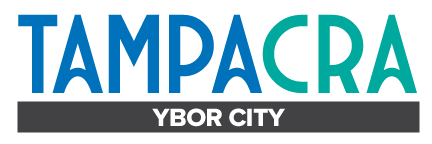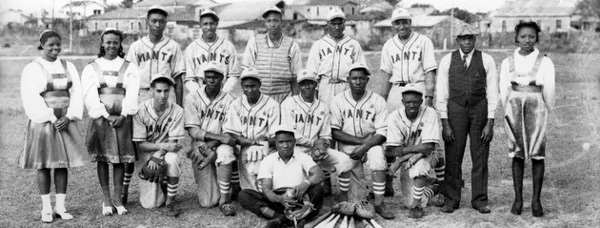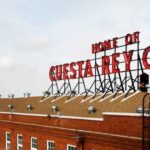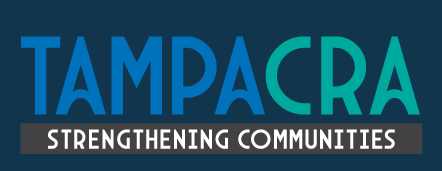Tampa Baseball Museum Celebrates Ybor’s Diverse History

 In 1920, during the height of ‘Jim Crow’ and racial segregation, a group of talented young athletes walked out onto Plant Field near the University of Tampa. Known as the Tampa Giants, these athletes became the pride of the black and multi-ethnic community in Tampa Bay. This year for Black History Month, the Tampa Baseball Museum at the Al Lopez House shined a spotlight on the exciting history of the Tampa Giants and the Negro National Leagues.
In 1920, during the height of ‘Jim Crow’ and racial segregation, a group of talented young athletes walked out onto Plant Field near the University of Tampa. Known as the Tampa Giants, these athletes became the pride of the black and multi-ethnic community in Tampa Bay. This year for Black History Month, the Tampa Baseball Museum at the Al Lopez House shined a spotlight on the exciting history of the Tampa Giants and the Negro National Leagues.
Black baseball players played on major league teams for much of the late 1800s. At the turn of the century, as racial tensions began to heighten and southern states began to implement segregation laws, black players were pushed off of their teams. Passionate about baseball, these players formed their own teams, ‘barnstorming’ around the country to play anyone who would challenge. Seeing a rise in the demand for more official games, the Negro National League was founded in the Midwest. Not to be outdone, rival leagues in the South and Northeast were formed. Together, these leagues brought the thrill of baseball to minority communities in the U.S., Canada and Latin America.
 The Tampa Giants commonly faced off against their Florida rival the Plant City Favorites and All-Colored Cubans that formed the three dominant teams in the Florida Negro League. Not only did these teams become major cultural symbols, their local activities also created huge economic opportunities for multi-ethnic communities including Ybor City. Our Tampa Giants were not just extraordinary because they were from Tampa, they were also incredibly talented. In 1947 the Giants brought home the Florida State Negro League Championship, adding to the long history of #ChampaBay.
The Tampa Giants commonly faced off against their Florida rival the Plant City Favorites and All-Colored Cubans that formed the three dominant teams in the Florida Negro League. Not only did these teams become major cultural symbols, their local activities also created huge economic opportunities for multi-ethnic communities including Ybor City. Our Tampa Giants were not just extraordinary because they were from Tampa, they were also incredibly talented. In 1947 the Giants brought home the Florida State Negro League Championship, adding to the long history of #ChampaBay.
Throughout February, the Tampa Baseball Museum told the story of the Negro Baseball League and its long heritage in Tampa Bay. Spotlighting famous players like Bernardo Fernandez, the museum shared how these players became local celebrities and fostered deep senses of pride within the community. Players like Fernandez, the son of a Cuban cigar maker in Ybor City, would later join semi-pro and pro teams after the end of the Jim Crow era. Fernandez played for teams across the country including the Pepsi-Cola Giants, the Jacksonville Red Caps, the Atlanta Black Crackers and the Cleveland Bears. In 1940, he was recruited to join the Philadelphia Stars.
The Negro National League was a major source of black pride in the heart of the Jim Crow era, maintained a high level of professional skill, and became centerpieces for economic development in many black communities. Three local teams dominated the Florida Negro League, the Tampa Giants, Plant City Favorites, and the All-Colored Cubans. The Tampa Giants became a focal point for the multi-racial Tampa Community, with the home games being played at Plant Field near the University of Tampa. In 1947, the Tampa Giants won the Florida State Negro League Championship season.
The Tampa Baseball Museum at the Al Lopez House is located at 2003 N. 19th St. in Ybor City in the rehabilitated childhood home of Al Lopez, Tampa’s first Major League player, and Hall of Fame inductee. When the Museum opens this summer, exhibits will weave a tapestry of Tampa’s iconic baseball history that spans more than 130 years. It begins with the first team in Ybor City established by the Cubans in 1887, includes an exhibit on the Florida Negro League, and continues through our most recent local history. The museum is designed to be a community destination and gathering place, and a space for education, inspiration, and the celebration of American’s favorite pastime. Tampa Baseball Museum is owned by the Ybor City Museum Society, a 501(c)(3) nonprofit organization that also supports the nearby Ybor City Museum State Park.
Tampa’s first Major League player, and Hall of Fame inductee. When the Museum opens this summer, exhibits will weave a tapestry of Tampa’s iconic baseball history that spans more than 130 years. It begins with the first team in Ybor City established by the Cubans in 1887, includes an exhibit on the Florida Negro League, and continues through our most recent local history. The museum is designed to be a community destination and gathering place, and a space for education, inspiration, and the celebration of American’s favorite pastime. Tampa Baseball Museum is owned by the Ybor City Museum Society, a 501(c)(3) nonprofit organization that also supports the nearby Ybor City Museum State Park.



